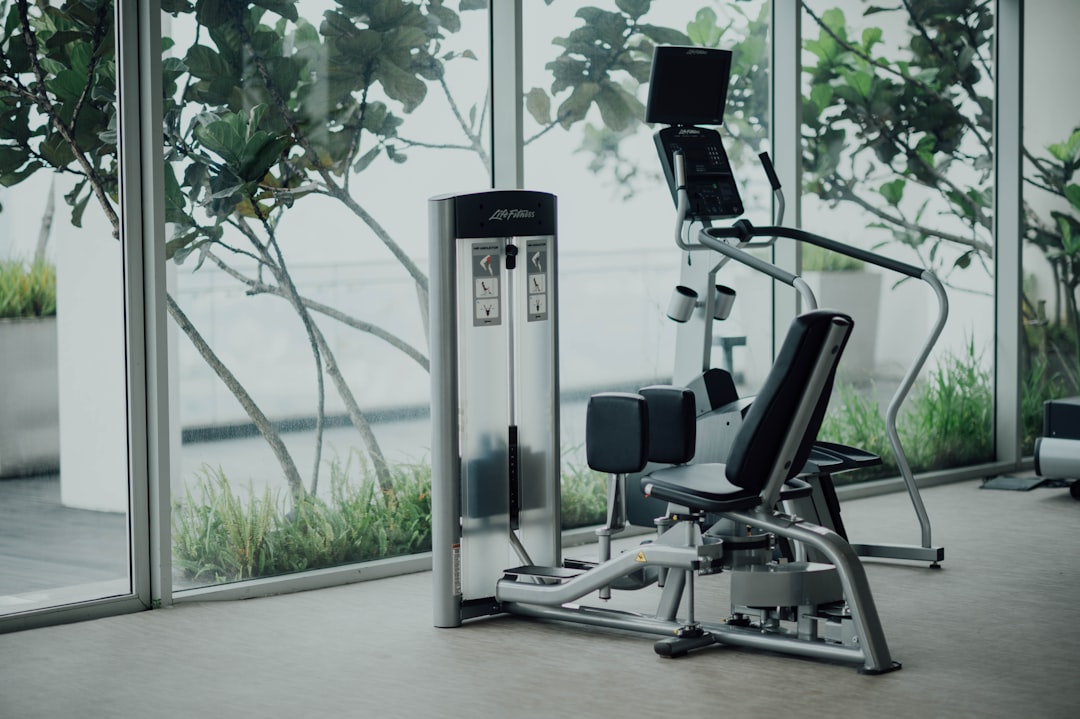Kickstart Your Fitness Journey with Home Workout Videos
Jumpstart your fitness journey with home workout videos. Discover routines for all levels and start seeing results today.
Benefits of Home Workout Videos
Convenience and Flexibility
One of the primary benefits of home workout videos is the convenience they offer. Unlike traditional gym sessions, home workouts can be done at any time, allowing individuals to fit exercise into their busy schedules without the need for travel.
This flexibility means that you can work out in the morning, during a lunch break, or even late at night, depending on what suits your lifestyle best.
Cost-Effectiveness
Home workout videos are a cost-effective alternative to gym memberships and personal training sessions. Many high-quality workout videos are available for free on platforms like YouTube, and even subscription-based services are often more affordable than a monthly gym fee.
This makes it easier for individuals to maintain a consistent fitness routine without breaking the bank.
Variety and Customization
With a vast array of home workout videos available online, users can enjoy a wide variety of exercise styles, from yoga and Pilates to high-intensity interval training (HIIT) and dance workouts. This variety helps keep workouts interesting and engaging, reducing the likelihood of boredom.
Additionally, many videos offer modifications and levels of difficulty, allowing users to customize their workouts according to their fitness levels and goals.
Privacy and Comfort
Exercising at home provides a level of privacy and comfort that is often lacking in a gym setting. For those who may feel self-conscious about working out in front of others, home workout videos offer a safe space to exercise without judgment.
This can be particularly beneficial for beginners who are just starting their fitness journey and may not yet feel comfortable in a gym environment.
Consistency and Motivation
Home workout videos can help foster consistency and motivation by providing structured routines and guidance. Many video series are designed to be followed over a set period, such as 30-day challenges, which can help users stay committed to their fitness goals.
Additionally, the presence of a virtual instructor can offer motivation and encouragement, making it easier to push through challenging workouts.
Popular Home Workout Video Platforms
YouTube
YouTube is one of the most accessible platforms for home workout videos, offering a vast array of free content. From yoga and pilates to high-intensity interval training (HIIT) and strength training, YouTube hosts thousands of channels dedicated to fitness.
Users can easily find workouts that suit their preferences and fitness levels, with the added benefit of community interaction through comments and live sessions.
Popular fitness influencers and certified trainers often upload content regularly, ensuring fresh and engaging workouts. The platform’s algorithm also helps users discover new videos based on their viewing history, making it easier to find relevant content.
Peloton
Peloton is renowned for its interactive and immersive workout experiences.
Originally known for its cycling classes, Peloton has expanded its offerings to include a wide range of home workouts, such as strength training, yoga, and meditation. The platform provides both live and on-demand classes, allowing users to choose sessions that fit their schedules.
Peloton’s subscription model offers a personalized experience, with features like performance tracking and leaderboards to motivate users.
The platform’s community aspect is also a significant draw, as users can connect with others and participate in challenges.
Beachbody On Demand
Beachbody On Demand is a comprehensive platform offering a variety of workout programs designed by expert trainers. Known for popular programs like P90X, Insanity, and 21 Day Fix, Beachbody caters to different fitness goals and levels.
Subscribers have access to structured workout plans, nutrition guides, and progress tracking tools.
The platform emphasizes a holistic approach to fitness, combining exercise with nutrition and mindset coaching. With its extensive library of workouts, users can easily switch between programs to keep their routines fresh and challenging.
Apple Fitness+
Apple Fitness+ integrates seamlessly with Apple devices, offering a personalized workout experience.
The platform provides a wide range of workouts, including cycling, treadmill, rowing, and mindful cooldowns, led by a diverse team of trainers. Each session is accompanied by curated music playlists to enhance the workout experience.
Fitness+ leverages the Apple Watch to deliver real-time metrics and personalized recommendations, helping users track their progress and stay motivated.
The platform’s integration with the Apple ecosystem makes it a convenient choice for Apple users seeking a comprehensive fitness solution.
Tips for Effective Home Workouts
Choose the Right Workout Videos
Selecting the right home workout videos is crucial for maintaining motivation and achieving your fitness goals. Look for videos that match your fitness level and interests.
Whether you prefer high-intensity interval training (HIIT), yoga, or strength training, there are countless options available online.
Consider the length of the workout and the equipment required. Some videos require no equipment at all, making them perfect for those just starting out or with limited space.
Reading reviews and watching previews can also help you find the most suitable videos for your needs.
Set a Consistent Schedule
Consistency is key when it comes to home workouts. Establish a regular workout routine by scheduling your sessions at the same time each day or week.
This helps build a habit and ensures that exercise becomes a non-negotiable part of your daily routine.
Use a calendar or a fitness app to set reminders and track your progress. By sticking to a schedule, you’ll be more likely to stay committed and see results over time.
Create a Dedicated Workout Space
Having a designated area for your workouts can make a significant difference in your motivation and focus.
Choose a space that is free from distractions and has enough room for you to move comfortably.
Ensure that your workout area is well-lit and has good ventilation. Having your equipment, such as mats, weights, or resistance bands, easily accessible will make it easier to start your workout without any delays.
Focus on Form and Technique
Proper form and technique are essential to prevent injuries and maximize the effectiveness of your workouts.
Pay close attention to the instructions provided in the workout videos, and don’t hesitate to pause or rewind if you need to review a particular move.
Consider using a mirror to check your form or recording yourself to identify areas for improvement. If you’re unsure about a specific exercise, look for additional resources or consult with a fitness professional.
Stay Motivated and Track Progress
Staying motivated can be challenging, especially when working out at home.
Set realistic goals and celebrate your achievements, no matter how small. Keeping a workout journal or using a fitness app can help track your progress and keep you accountable.
Mix up your routine by trying new workout videos or inviting a friend to join you virtually.
Variety not only keeps things interesting but also challenges your body in different ways, leading to better results.
Creating a Home Workout Video Routine
Define Your Fitness Goals
Before you start filming your home workout video, it’s crucial to define what you hope to achieve. Are you focusing on strength training, cardio, flexibility, or a combination of these?
Knowing your goals will help you design a routine that meets your needs and keeps you motivated. Consider your current fitness level and any specific areas you want to improve.
Plan Your Workout Structure
Once your goals are clear, plan the structure of your workout.
Decide on the duration of the video and how much time you will spend on each exercise. A well-balanced routine might include a warm-up, main workout, and cool-down.
Ensure that you include a variety of exercises to target different muscle groups and maintain engagement throughout the session.
Select Appropriate Exercises
Choose exercises that align with your fitness goals and are suitable for your fitness level. If you’re creating a beginner-friendly video, opt for simple, low-impact exercises.
For more advanced routines, incorporate complex movements that challenge strength and endurance. Always prioritize proper form to prevent injuries and maximize effectiveness.
Prepare Your Filming Space
Your filming environment should be clean, well-lit, and free from distractions.
Ensure there is enough space to perform exercises safely. Consider the background and how it appears on camera.
A tidy, uncluttered space helps viewers focus on the workout. Test your camera angles to capture your movements clearly and adjust lighting to avoid shadows.
Record and Edit Your Video
When recording, speak clearly and provide detailed instructions for each exercise.
Encourage viewers by offering modifications for different fitness levels. After filming, edit the video to enhance quality.
Trim unnecessary footage, add background music, and include text overlays or graphics to highlight key points. Editing software can help you create a polished final product.
Share and Promote Your Workout Video
Once your video is ready, choose the right platform to share it with your audience.
YouTube, Instagram, and fitness apps are popular choices. Optimize your video title and description with relevant keywords to increase visibility.
Engage with your audience by responding to comments and encouraging feedback. Consistent promotion will help grow your viewership and establish your presence in the home workout community.
FAQ
Q1: How often should beginners engage in home workout videos to avoid soreness and overtraining?
A1: For beginners, it’s crucial to start slowly to allow your body to adapt to new physical demands. Aim for 2 to 3 sessions per week, with at least a day of rest in between to prevent excessive soreness and reduce the risk of injury. This schedule provides ample time for muscle recovery and adaptation. As your fitness level improves, you can gradually increase the frequency and intensity of your workouts.
Q2: What strategies can advanced users employ to overcome a fitness plateau when using home workout videos?
A2: Advanced users may encounter plateaus where progress seems to stall. To overcome this, consider incorporating variety and progressive overload into your routine. Try new workout styles, increase weights or resistance, or add more complex movements to your regimen. Additionally, focus on improving form and technique to maximize efficiency. Periodically reassessing your goals and tracking progress can also provide motivation and direction.
Q3: What is the optimal recovery timing for advanced users following intense home workout sessions?
A3: Advanced users engaging in intense workouts should prioritize recovery to enhance performance and prevent injury. Generally, allow 48 to 72 hours for muscle groups to recover before targeting them again with high-intensity exercises. Incorporate active recovery days with light activities like yoga or walking, and ensure adequate sleep and nutrition to support muscle repair. Listening to your body and adjusting your schedule based on how you feel is key to effective recovery.
Takeaway
“Ready to crush your fitness goals and unleash your full potential? Start your new workout challenge today and transform your body and mind! Download our FREE training plan to kickstart your journey to a healthier, stronger you. Join our vibrant and supportive fitness community for daily motivation, expert tips, and endless encouragement. Let’s sweat, smile, and succeed together! Take the first step now and make your fitness dreams a reality!” According to a report by Bloomberg,
References











Comments